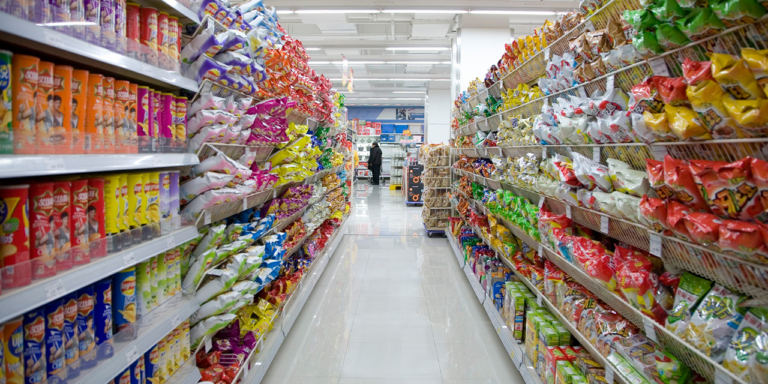Economies of scale have given rise to larger and larger retail organizations. Many retailers today manage tens of thousands of products, sourced from hundreds of suppliers, delivered to thousands of stores, and finally to millions of consumers. If that’s not a big enough challenge, they also need to constantly update their assortments, run promotions, and refresh their stores and online channels to stay relevant in their customers’ eyes.
As in many other industries, retailers have sought to contain such complexity by establishing separate functions—merchandising, supply chain, and operations—with specialized teams, each tasked with running one part of a complicated operation. They often rely on cross-functional Sales & Operations Planning (S&OP) and Sales & Operations Execution (S&OE) meetings to discuss plans and upcoming changes and ensure alignment between these teams.
This works reasonably well if there’s a) a clear understanding of how one function’s decisions impact the others and b) a clear planning cadence, such as an annual budgeting process or quarterly range review. But what happens when siloed businesses face disruption that simultaneously impacts all functions and forces teams to bypass normal planning cadences and make decisions on the fly?
Retail’s Adaptability Has Been Put to the Test
Retailers’ ability to adapt quickly has truly been put to the test. In the last decade, retailers have moved from online to true omni-channel, offering customers a wide range of increasingly fast, convenient, and cheap fulfillment options.
At the same time, they’re waging a technological arms race involving contactless checkout, in-store robots, micro-fulfillment centers, automated distribution centers, and drone deliveries—things that looked like science fiction a decade ago.
Finally, as supply chains have become leaner and more global, retail has become much more susceptible to external shocks, whether wildfires, trade wars, hurricanes, or the current COVID-19 pandemic.
Not all retailers have survived unscathed. Many have gone bankrupt, others have been acquired by more successful competitors, and some are slowly fading into irrelevance as their diminishing customer base erodes. Unfortunately, these retailers failed to adapt to the changing retail market.
But how can one manage the complexity inherent to retail and maintain efficiency while also adapting rapidly to changes in the market?
The Need for Speed and Adaptability Calls for a Retail Nervous System
Let’s talk biology for a second. Have you ever thought about what happens when you are about to fall over? Usually, your body somehow manages to keep you on your feet through an intricate combination of movements involving your arms, legs, back, and abdomen. Thinking back, you don’t actually know what happened.
That’s because in addition to the brain, which is responsible for creative thinking and conscious decisions, our bodies are equipped with a nervous system that executes a wide range of activities without us really noticing. The nervous system collects and shares sensory data, regulates our vital functions like breathing, and triggers reflexes in response to external stimuli.
Just like the human body, retail winners combine deliberative planning with technology for automation and connectivity. They rely on their human experts for strategic and creative thinking, for defining business priorities, and for applying the right business tactics—but they leverage AI-driven, unified planning technology to serve as a retail “nervous system” that’s responsible for:
- Continuously collecting huge amounts of data on demand, inventory, the movement of goods, external factors (such as weather or local events), business plans, and resources and capacity throughout the supply chain
- Translating this raw data into usable information on what is happening and how it impacts all parts of the business
- Effectively implementing plans and business priorities across functions
- Automatically optimizing and executing key processes, such as forecasting and replenishment
- Autonomously managing disturbances, for example by proactively pulling orders forward to level out the goods flow and remove a capacity bottleneck
By combining human expertise with advanced planning and optimization technology, retailers can innovate and adapt to market changes while ensuring effective execution.
What Does This Look Like in Practice?
German drugstore giant Rossmann is a firm believer in supporting their planning team with technology that enables them to implement their considerable expertise at scale. They have, for example, reached 100% automation in store fulfillment, applying automatic forecasting and replenishment to 35 million goods flows.
Rossmann has seen enormous changes resulting from the COVID-19 pandemic, in terms of both surging demand volumes and customer demand patterns. Supported by a sophisticated planning solution, their team of experts was able to adapt to unprecedented market changes while maintaining a high level of efficiency. “With RELEX in place across the business, we were able to successfully navigate the coronavirus crisis, support individual stores, and meet our customers’ needs with a high level of service during this unique time of shifting demand,” Rossmann’s Director of Supply Chain Jürgen Mattulke explained in a recent case study.
Retail is tough these days, there’s no other way to say it. But still, it’s impossible not to feel excited about the range of opportunities being unlocked by advancements in AI and large-scale data collection and processing.
This blog post was inspired by Bob Hetu’s thoughts on how AI can be the nervous system of business and Thomas O’Connor’s webinar “Position Your Supply Chain as the Nervous System of Business to Drive Success.”




